Change happens where we live, therefore our furniture has to reflect what we need in order to keep us stimulated and organized. The Cabinet reflects reduction and simplicity. It needs less, but gives more. More time for what is important.
It's shapes claim universality and embraces to be utilized in all environments. The Cabinet shares functions, which emphasize wellbeing. Through pure and natural materials it remembers us on what's real.
Change happens where we live, therefore our furniture has to reflect what we need in order to keep us stimulated and organized. The Cabinet reflects reduction and simplicity. It needs less, but gives more. More time for what is important.
It's shapes claim universality and embraces to be utilized in all environments. The Cabinet shares functions, which emphasize wellbeing. Through pure and natural materials it remembers us on what's real.
Please highlight how the project can be exemplary in this context
By only using the material wood "The Cabinet" wants to target the gap between furniture concepts, which use recycled materials and concepts that use whole timber. The laminated wood plates from the Paulownia tree or emperor tree, how it is called in his origin countries in Asia, are one of the most sustainable wood types that we have on earth. Fast growing, yet shape retaining, extremely light and also highly aesthetic, with it's bright and wide texture it gives "The Cabinet" and it's following furnitures of the project characteristics, which are often unmatched in our furniture industries right now. In case of circularity the wood can be easily be reused for recycling, because no other materials than wood are included.
Please highlight how the project can be exemplary in this context
The main theme of "The Cabinet" is to merge the aesthetics of Scandinavian and Japanese traditional furniture design and to combine these emotional yet simple formal languages with the topic of reduction and forming human interaction. The Cabinet's shape is round, but at the same time straight and reserved, it's aura attracts with bright colour and even wood grain. It's drawers can only be opened with two hands, which engages the user in a calmness evoking movement in which let's him/her concentrate on what she/he is doing. They can be taken out to bring the things in side near to the places where one needs them. By being lightweighted it's installation in an environment is simple and makes the life of people easy.
The idea of the concept I used on The Cabinet is to give something back to the consumer, more than just function or aesthetic, it gives value and embraces to recognize value in everyday objects and actions. The furniture's surfaces is more vulnerable then standard ones and needs care taking and attention, through this it communicates the vulnerability of natural materials and nature itself.
In addition to this the Paulownia wood is flame retardant and can be used in places where norms for fire safety applie.
Please highlight how the project can be exemplary in this context
For me as a designer it's very important to create concepts, which can be afforded by a large audience to have a greater impact on society. "The Cabinet" was developed with this thought in mind. A sustainable and inexpensive material combined with a reserved appearance, yet remaining highly aesthetic and functional. Here is to say that the accessibility and inclusivity of this storage unit is not over standard and that the project had to sacrifice some of this features for advantages in other fields.
Please highlight how this approach can be exemplary
In The Cabinet these three dimensions are brought together by merging the aesthetics of Scandinavian and Japanese traditional furniture and creating a hybrid, which is then infused with strong characteristics in function, sustainable features in it's production process and great quality in shaping the integration of human interactions.
Reconnecting with nature also means to relocate oneself in his/her relationship to his/her environment. The experience of reconnecting with something is a sensual process, which needs reason and attention for one's surroundings. The Cabinet wants to be one part of an environmental transformation that helps humans to relearn the value of natural materials. The project starts this process of relocating where human life takes places and creates therefore a great impact.
Please also explain the benefits that derived from their involvement.
Therefore that no citizens and/or civil society were directly involved in the developed of The Cabinet I want to share here an excerpt of Tomas Maldonados Issues article "The Idea of Comfort":
"Now we must ask ourselves how and when the tactics and figures that govern our daily domestic culture are going to emerge, that is, the control mechanisms that aid in structuring, and in the final analysis, stabilizing daily life in capitalist society; how and when, in other words, the system values and norms that today is at the heart of all modern ways of considering useful objects, of prefiguring behavior, of articulating living areas w emphasis on women, see the pioneer burst into the surge of history."
The challenges of material insufficiency and the global traffic having a bad impact on the climate points to a more local approach of production processes. The Cabinet uses wood that grows all over the world and it's smart but simple construction can be accomplished without specialized technology. It takes a step back to take two steps forward to the solution of how we as humans are economical about the products we manufacture.
The innovative part of "The Cabinet" is the concept of how it is experienced. Calming down the user and letting him be mindful and present, when the drawers are used. The traditional form language hides this feature so that the user unknowingly can benifit from it's own actions. This step forward to intervene in how we interact with objects in our everyday life differs from mainstream approaches to furniture concepts.
Please provide clear documentation, communication of methodology and principles in this context.
The idea of creating sustainable products, which subtle changes behavior of user are easy communicated by text and speech. The difficulty of finding solutions for situations that have the potential to provide these changes in behavior is an other thing.
Sustainable materials meets simplicity and evokes emotions by creating value (for) and a connection between consumers and the world their live in.
The images are provided in a lower resolution, if a higher resolution than the provided is needed please contact me.
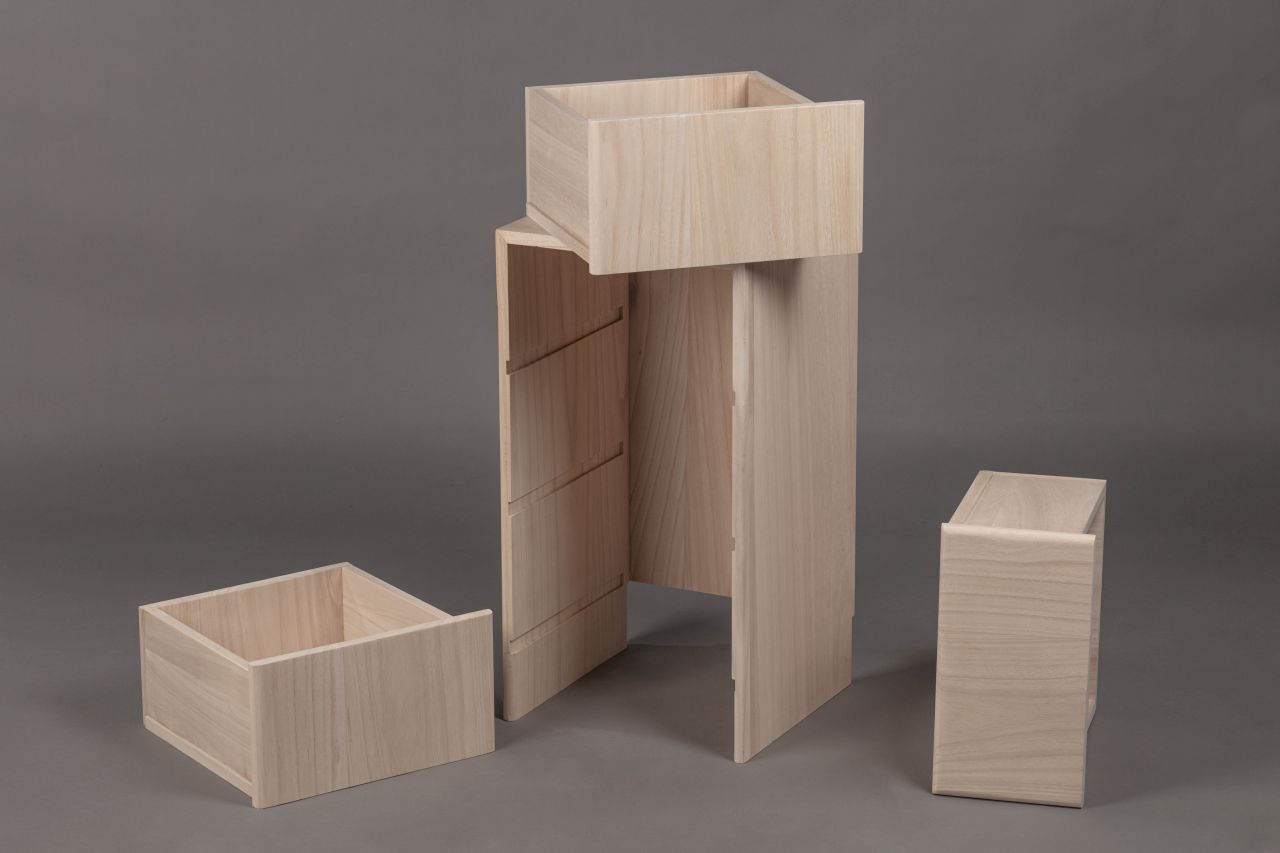
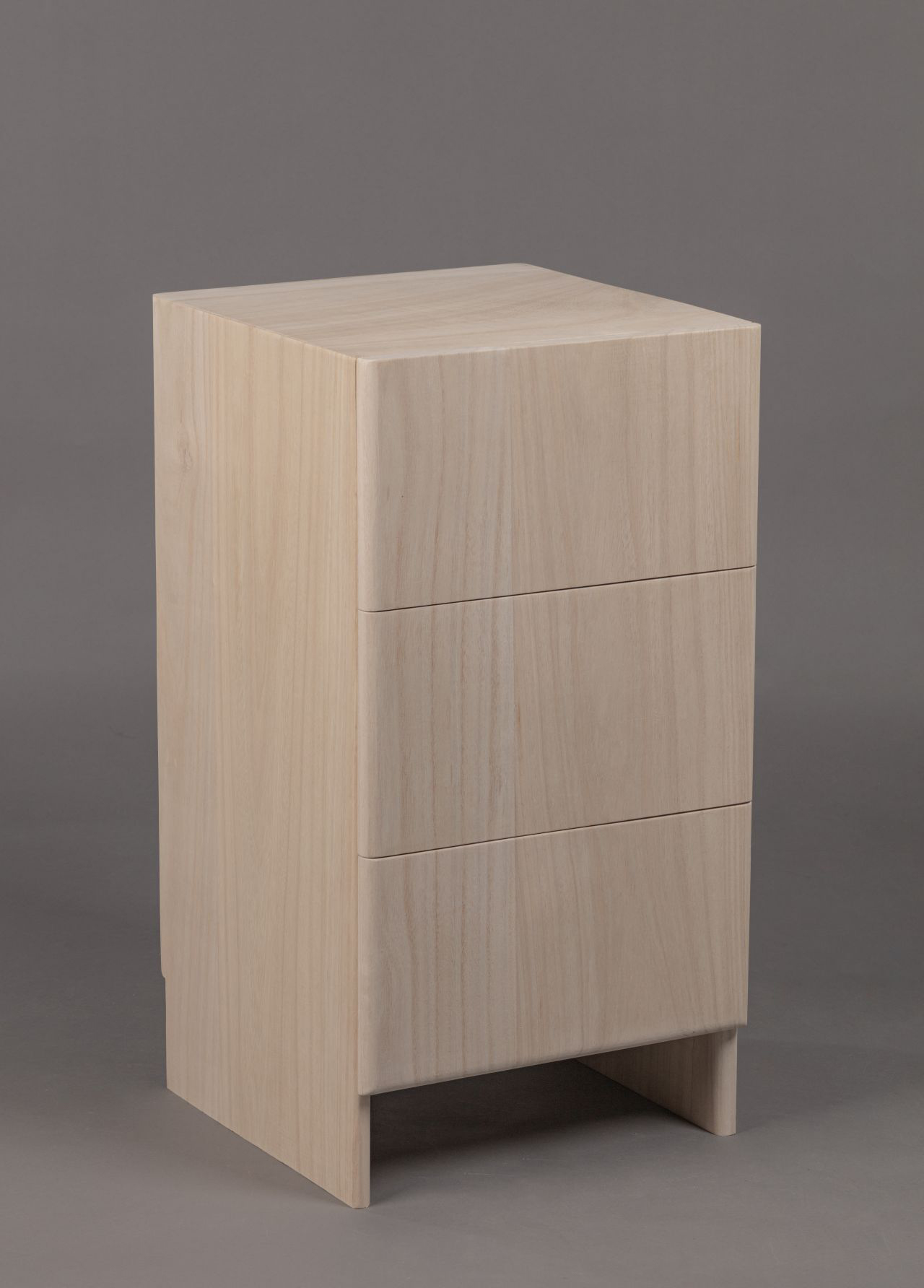
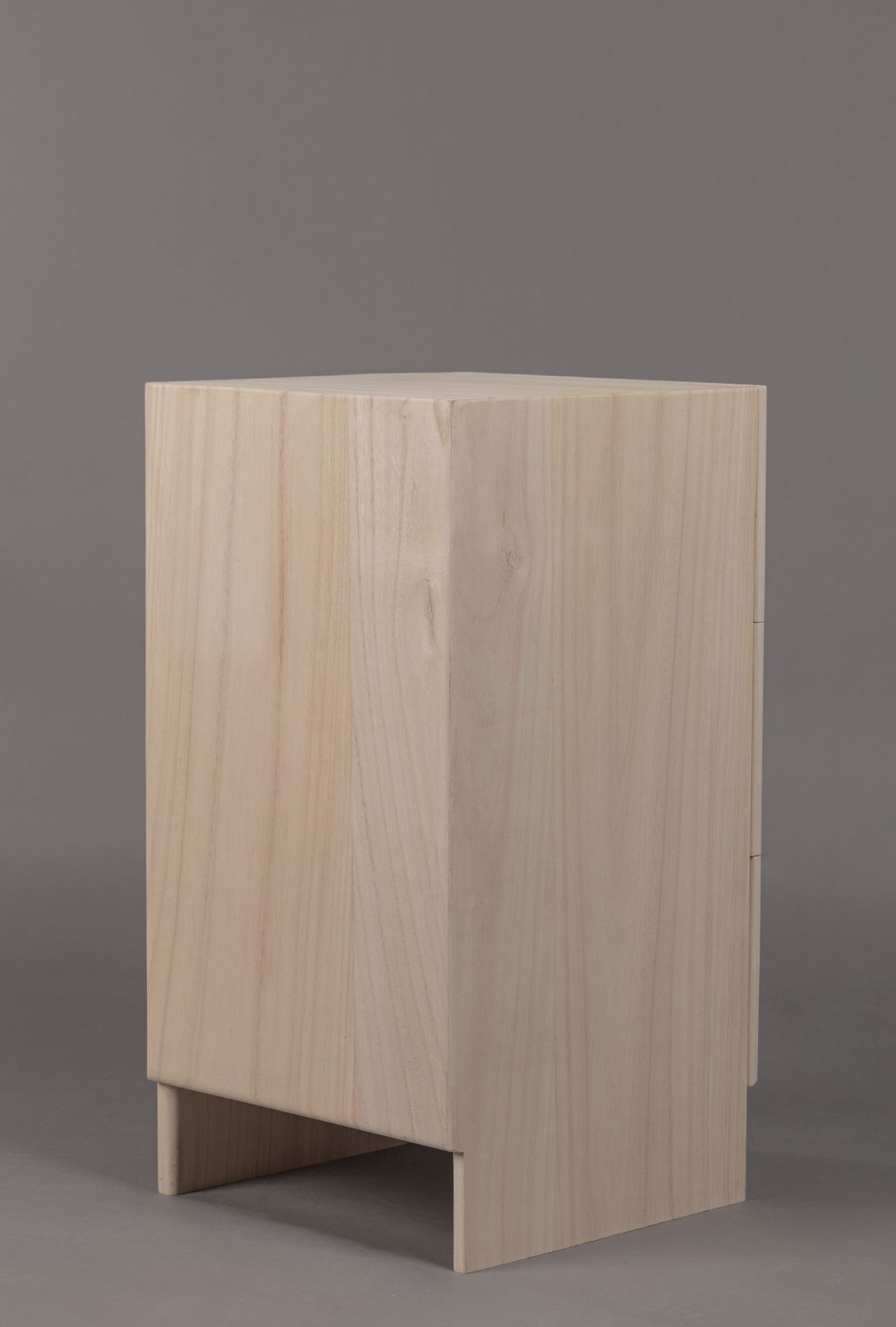
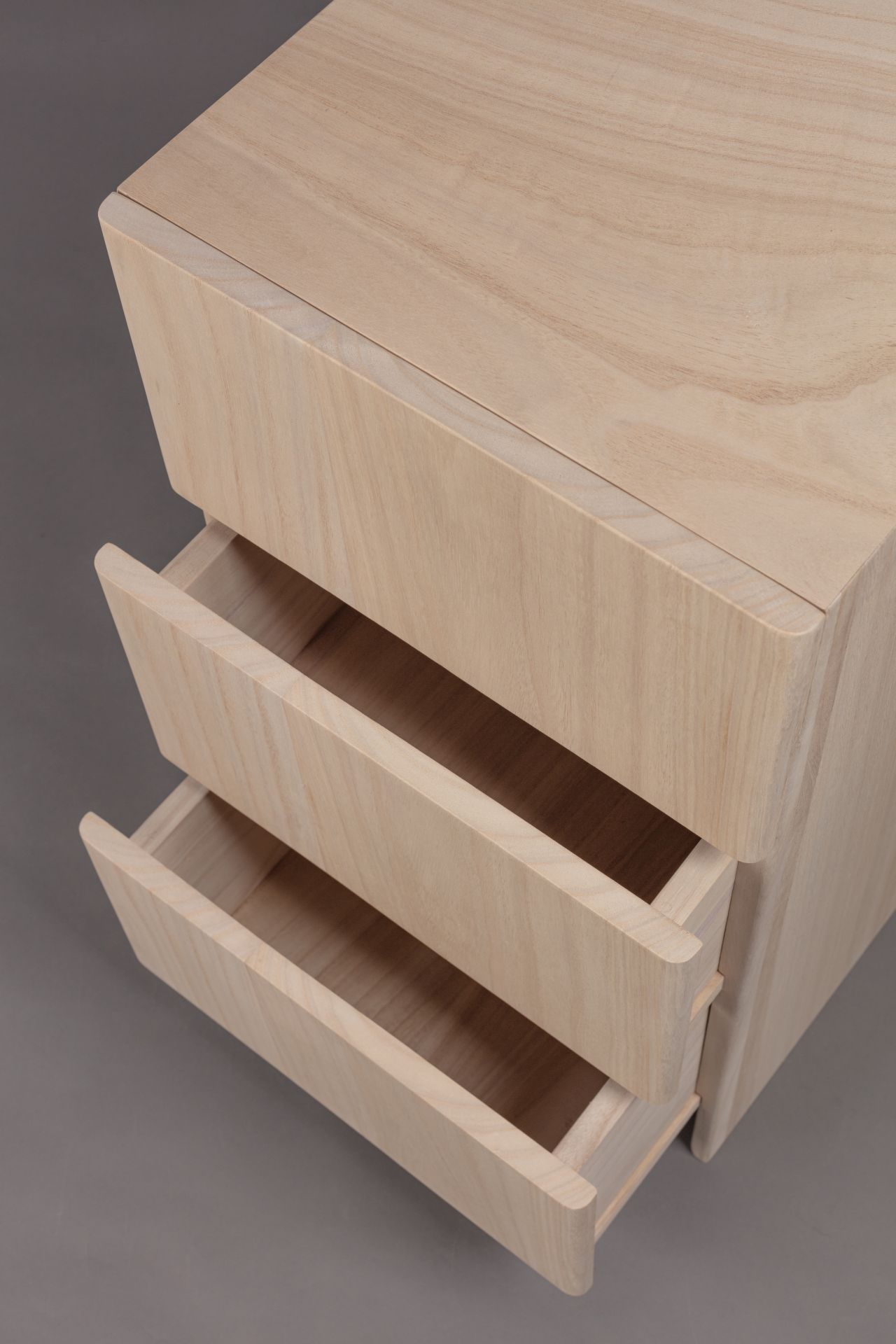

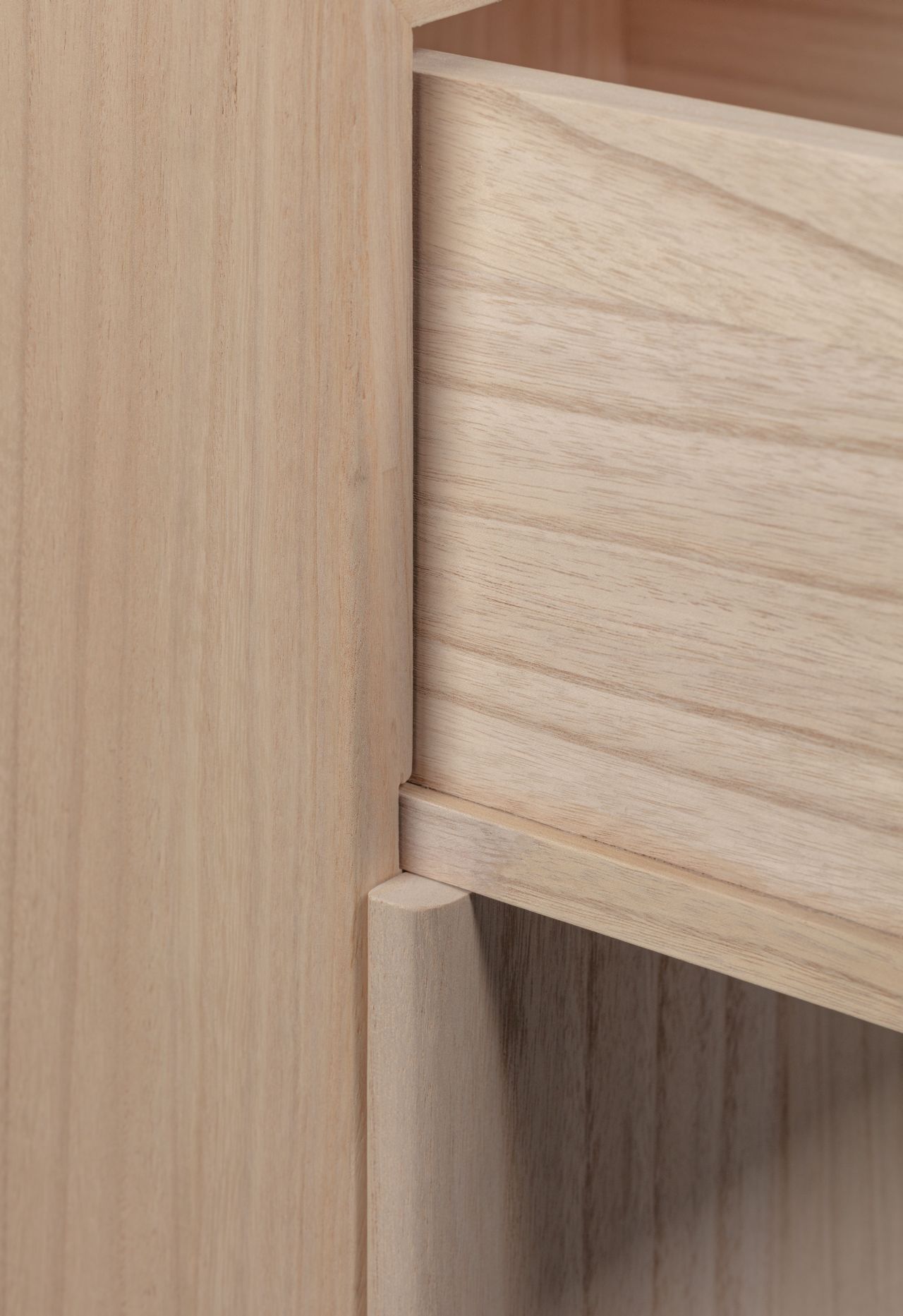
@Simon ToniRowas, 2022
Content licensed to the European Union.